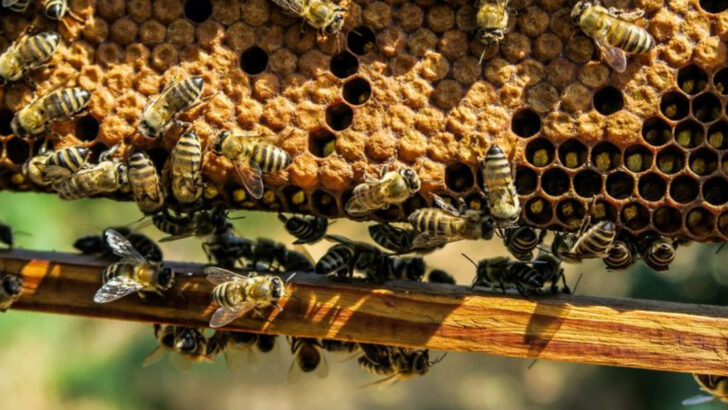Honeybees run one of the most sophisticated societies on Earth—and they do it without a single argument or wasted second. Every bee knows its role, follows the rules, and works tirelessly to keep the hive thriving. No drama, no confusion, just pure teamwork.
But don’t mistake their orderly world for simplicity. Beneath the buzz, honeybee society is packed with hidden rituals, bizarre behaviors, and secrets stranger than fiction. Some bees dance to communicate. Others work themselves to death. And the queen? She can lay over a thousand eggs a day, yet she’s still at the mercy of her workers.
This isn’t just a colony—it’s a world filled with power struggles, sacrifices, and astonishing instincts. Think you know honeybees? Think again. Here are 22 secrets that will make you see them in a whole new way.
The Queen’s Pheromone Power
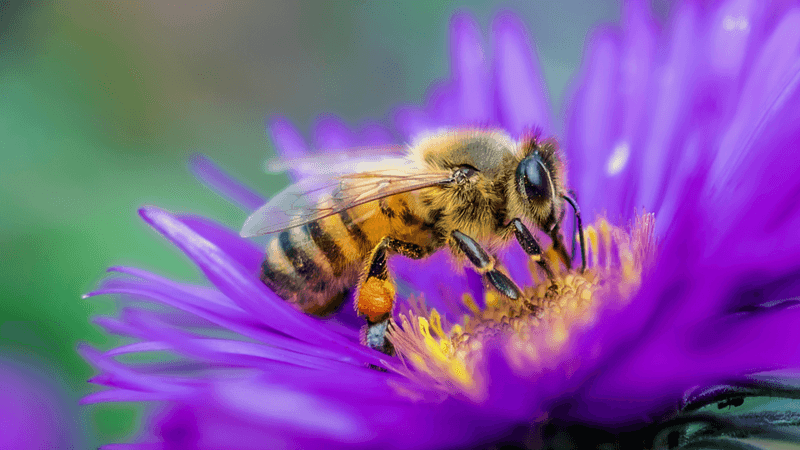
The queen bee’s pheromones are her invisible crown, controlling the dynamics of the entire hive. Her unique chemical scent keeps the worker bees loyal and industrious. This pheromone also suppresses the development of new queens, ensuring her reign remains uncontested. In a bustling hive, the queen’s pheromones are spread by worker bees, maintaining harmony and unity. These pheromones communicate her health and vitality, influencing the overall productivity. Without her scent, chaos would ensue, making the queen’s chemical signals vital for the colony’s survival. Hence, the queen is the true heart of the hive, more than just a monarch.
Dancing Directions
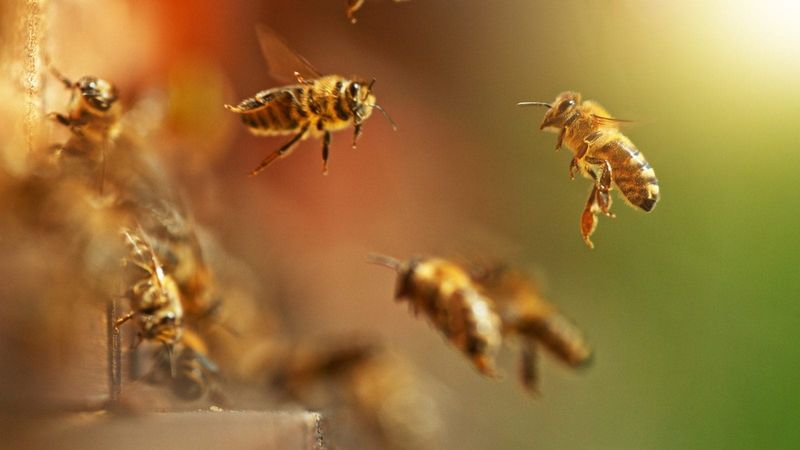
Honeybees have a unique way of communicating directions through dance. The waggle dance, as it’s known, is a sophisticated way to inform fellow bees about the location of food sources. The dance’s angle and duration convey precise information regarding direction and distance. Observing bees interpret these cues and find their way to the bounty. This method of communication is not only efficient but also a testament to the bees’ complex social structure. The waggle dance showcases their ability to work collectively, ensuring the hive’s survival by efficiently gathering resources. It’s a mesmerizing spectacle of nature’s ingenuity.
Honeycomb Architecture
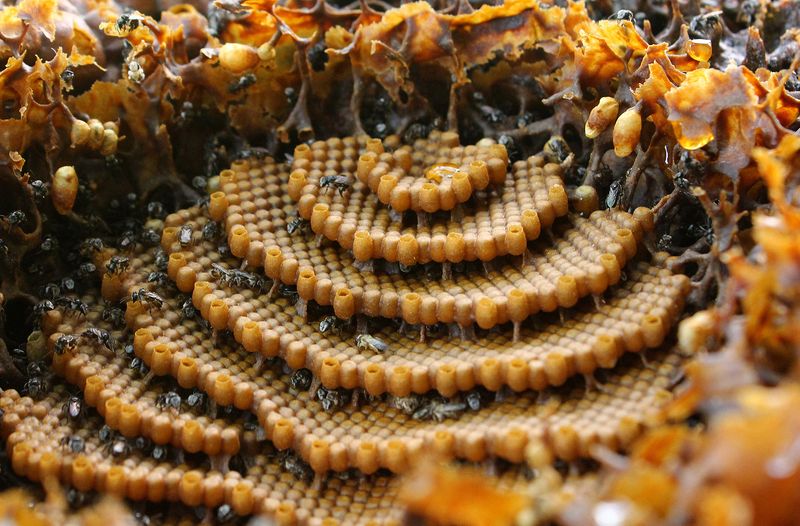
The honeycomb is a marvel of engineering, designed for maximum efficiency. Each cell is a perfect hexagon, a shape that uses the least amount of wax while providing strength and storage capacity. This geometric ingenuity allows honeybees to store large quantities of honey and pollen. The uniformity and precision of honeycombs are not only visually appealing but also a testament to the bees’ instinctual craftsmanship. As the bees meticulously construct their hive, they ensure each cell is uniform, maximizing space and resources. This natural engineering feat is a reflection of their commitment to the colony’s sustainability and success.
Guard Bees on Duty
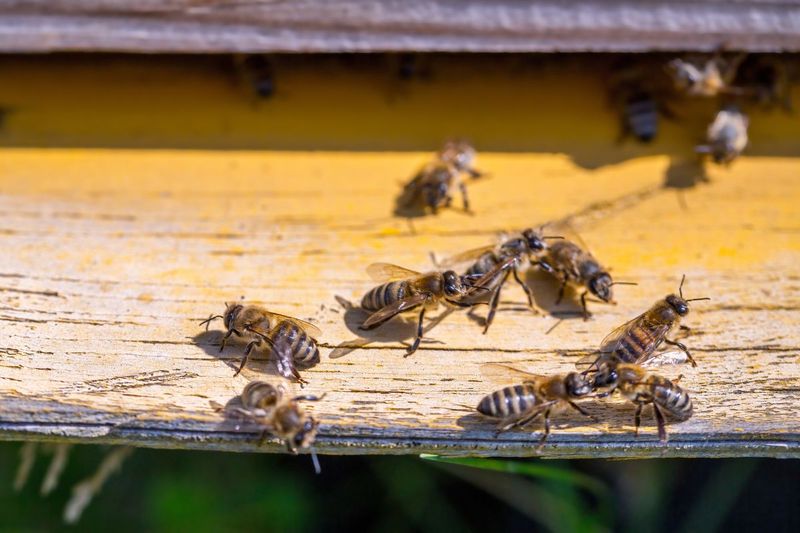
Guard bees are the colony’s first line of defense, protecting the hive from intruders. These bees station themselves at the entrance, scrutinizing each incoming bee by scent to ensure it belongs. They are ready to fend off predators and invaders, using their stingers if necessary. Guard bees are vigilant and fearless, embodying the hive’s commitment to security. Their role is crucial during times of nectar flow, when the hive is most vulnerable. By maintaining strict access control, these bees ensure the safety and integrity of the colony. Their dedication keeps the hive thriving and secure amidst countless threats.
Royal Jelly Nutrition
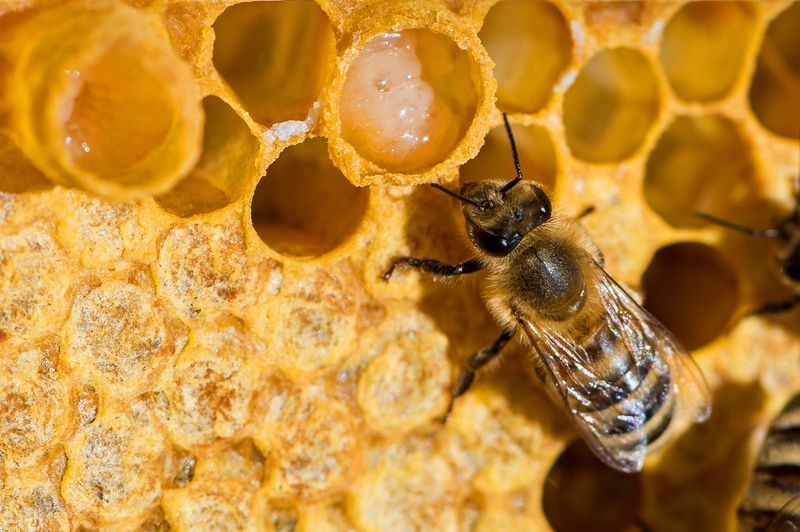
Royal jelly is a nutritional powerhouse, transforming a regular larva into a queen. This rich, creamy substance is secreted by worker bees and is the queen’s exclusive diet throughout her life. Its unique composition promotes rapid growth and fertility, ensuring the queen’s longevity and productivity. For larvae, a diet of royal jelly triggers the development of reproductive organs, ultimately determining their royal status. This extraordinary food source underscores the bees’ ability to manipulate biological processes for the colony’s benefit. Royal jelly is a testament to the complexity of bee nutrition and its role in sustaining hive hierarchy.
Buzzing Communication
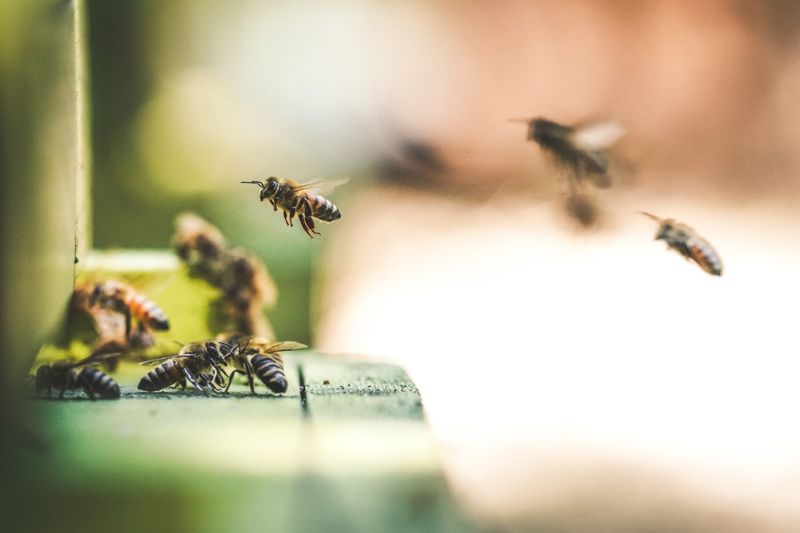
Beyond dances, honeybees use buzzing as a form of communication. By vibrating their wings, bees produce sounds that convey different messages. This buzzing can signal alarm, attract attention, or coordinate hive activities. It’s a versatile communication tool that transcends the limitations of pheromones and dances. In the hive’s dim interior, buzzing keeps the colony informed and connected. This acoustic signaling reflects the bees’ adaptability and resourcefulness. Such communication helps maintain order and efficiency within the bustling hive environment. Thus, buzzing is more than noise; it’s a sophisticated language that enhances the hive’s cohesive functioning.
The Role of Drones
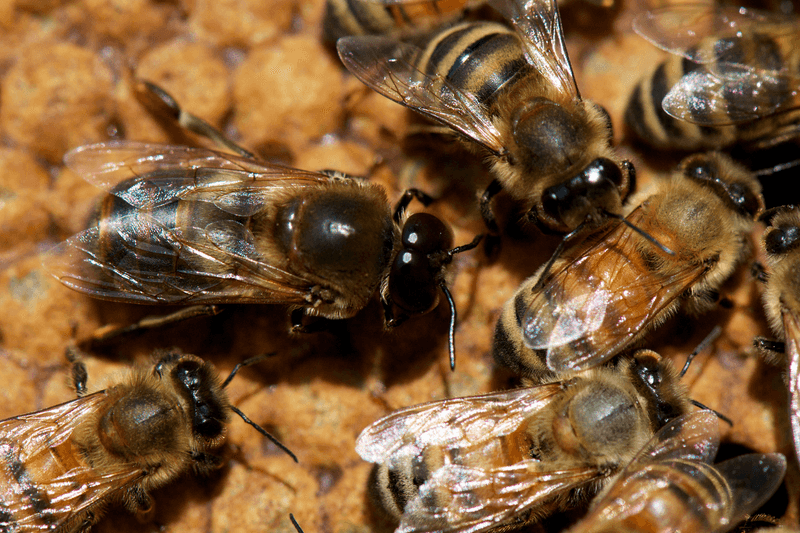
Drones, the male bees of the hive, have a singular purpose: to mate with a queen. Unlike worker bees, drones do not gather nectar or pollen, nor do they tend to young bees. Instead, they exist solely for reproduction. During mating flights, drones pursue queens, ensuring genetic diversity within the colony. After mating, drones typically die, completing their lifecycle. Their presence in the hive is vital during the breeding season. While they may seem redundant, drones are crucial for the continuation of the bee lineage. Their role illustrates the hive’s careful balance between efficiency and reproduction.
Pollen Basket Efficiency

Honeybees have specially adapted structures on their legs known as pollen baskets, or corbiculae. These baskets allow bees to efficiently collect and transport pollen back to the hive. Each trip, a bee can gather a substantial amount of pollen, crucial for feeding larvae and producing honey. The design of these baskets highlights the bees’ specialization and evolution towards efficiency. Pollen basket use underscores the hive’s emphasis on resource accumulation and sharing. This adaptation ensures the colony receives the nourishment it needs to grow and thrive. Bees’ dedication to pollen collection supports the entire ecosystem’s health.
Temperature Regulation
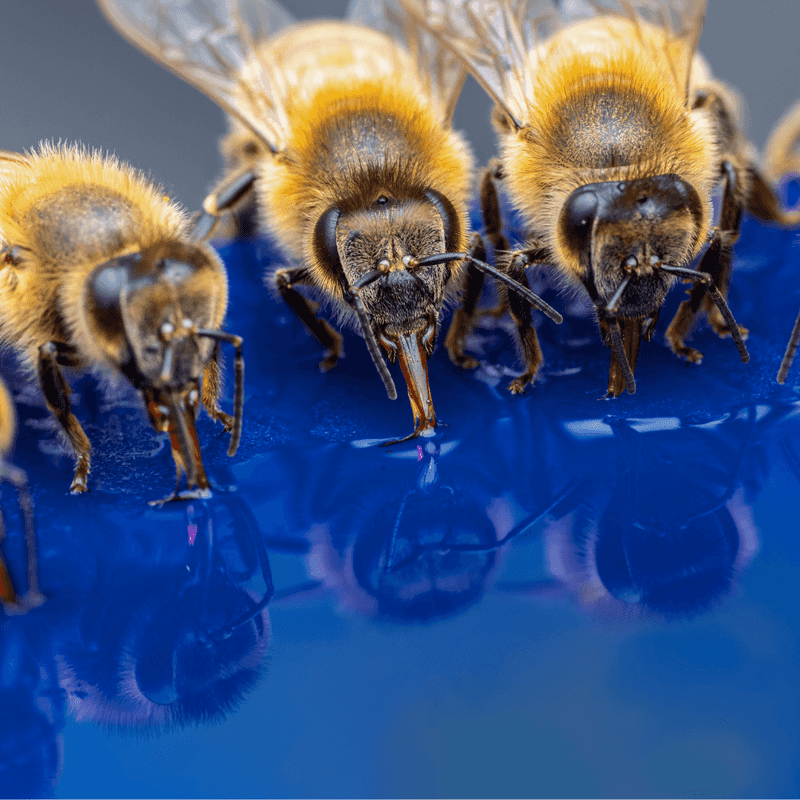
Honeybees are adept at regulating their hive’s temperature, ensuring optimal conditions for raising young and storing food. In hot weather, bees fan their wings to circulate air and cool the hive. During cold spells, they cluster together, generating heat through muscle activity. This thermoregulation demonstrates their adaptability and communal cooperation. By maintaining a stable environment, bees protect their brood and honey supplies from the elements. Temperature regulation is a testament to the hive’s resilience and the bees’ instinctual understanding of climate control. It’s a sophisticated example of natural engineering at work, crucial for colony survival.
Propolis Production
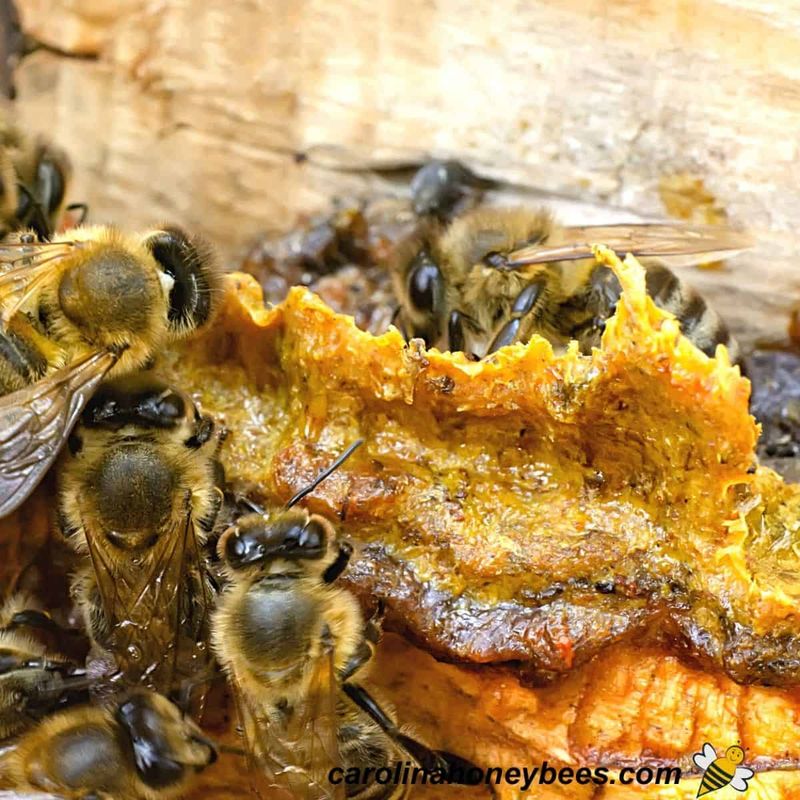
Propolis, or bee glue, is a resinous mixture bees produce to seal gaps and strengthen their hive. This sticky substance is made from tree sap and other botanical sources, combined with beeswax. Propolis acts as an antimicrobial barrier, protecting the hive from external threats and diseases. Its production and application reflect the bees’ understanding of environmental challenges and their proactive measures to counteract them. Propolis not only ensures structural integrity but also aids in hive hygiene. This natural sealant is a crucial component of bee architecture, showcasing their ability to use natural resources effectively.
Brood Cycle Insights
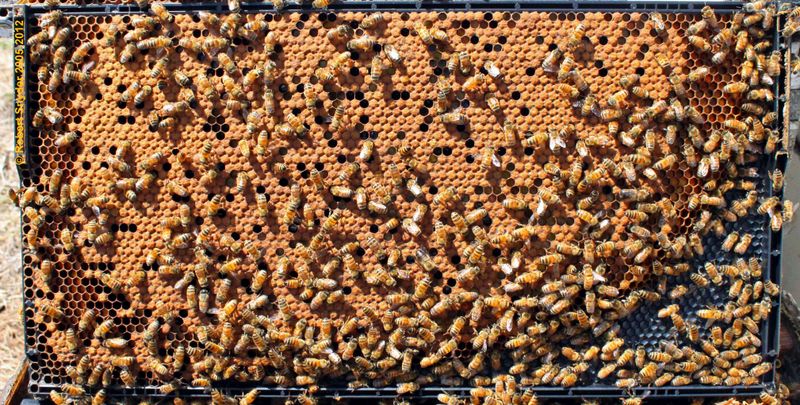
The brood cycle is a complex process that ensures the continuity of the bee population. Worker bees meticulously care for the brood, which consists of eggs, larvae, and pupae. They feed them royal jelly and pollen, adjusting care based on developmental stages. The brood cycle reflects the hive’s intricate social organization and dedication to nurturing the next generation. Worker bees’ roles as caretakers reveal the hive’s communal spirit and strategic planning. By carefully managing the brood, bees ensure a steady supply of new workers and potential queens. This cycle is essential for the colony’s growth and sustainability.
Foraging Fidelity
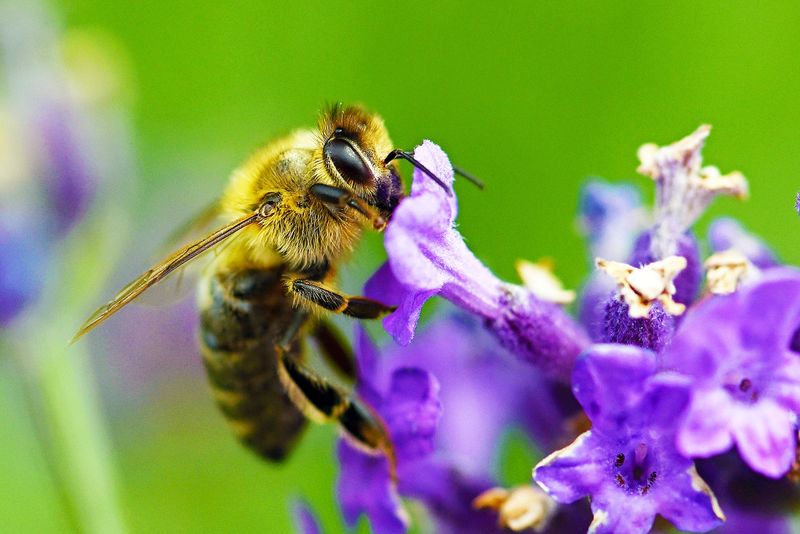
Foraging bees exhibit floral fidelity, visiting the same species of flowers during each trip. This behavior maximizes pollination efficiency and resource gathering. By focusing on one flower type, bees enhance the chances of successful pollen transfer, benefiting both the plants and the hive. This specialization shows the bees’ innate understanding of ecological relationships. Floral fidelity also streamlines the foraging process, allowing bees to collect nectar and pollen more efficiently. This focused foraging behavior underscores the hive’s strategic approach to resource acquisition, illustrating bees’ role as essential pollinators in maintaining biodiversity. Their fidelity benefits the ecosystem at large.
Swarming as Survival
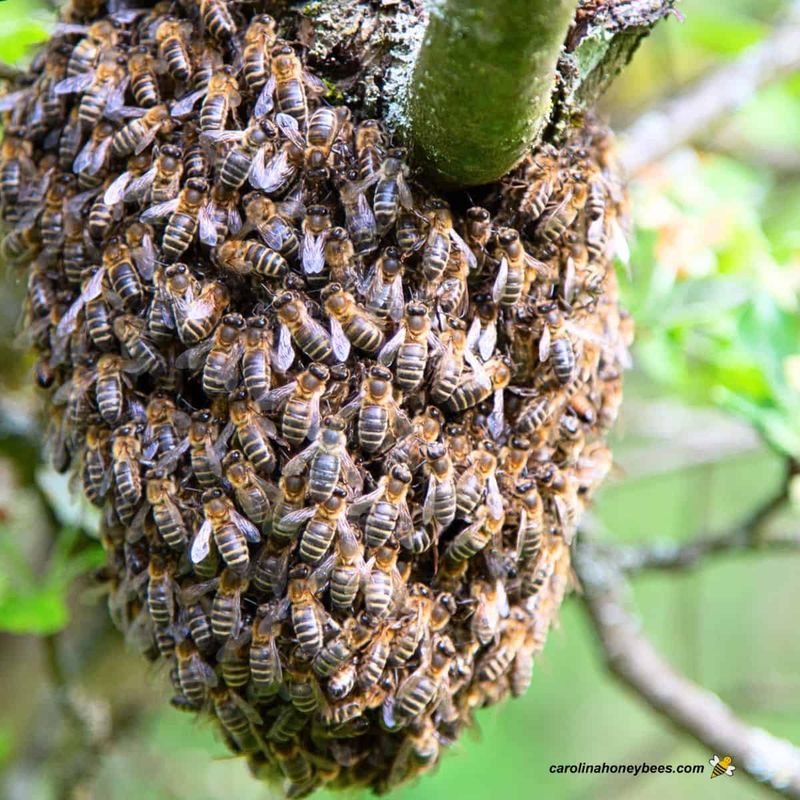
Swarming is a natural phenomenon where a hive divides to form a new colony. Led by the old queen, a swarm seeks a new home, leaving behind a new queen to continue the parent colony. This division allows for colony expansion and genetic diversity. Swarming is a strategic survival mechanism, ensuring bee populations thrive in various environments. While it may seem chaotic, swarming is a carefully coordinated process involving scout bees searching for suitable sites. This behavior reflects the bees’ resilience and adaptability, allowing them to colonize new areas and sustain their populations over time.
The Importance of Nectar
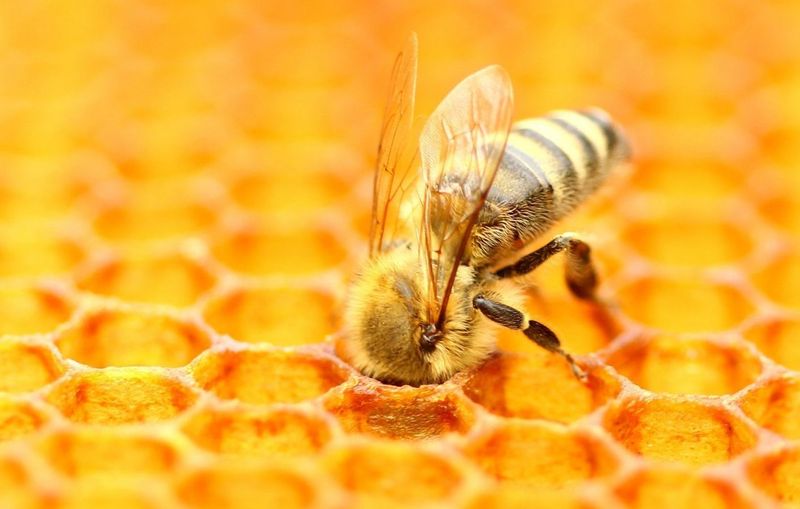
Nectar is the lifeblood of the bee colony, providing the essential sugars needed for energy. Bees convert nectar into honey, which serves as a stable food source during scarce times. This transformation process underscores the bees’ role in food preservation and resource management. Nectar collection drives much of the hive’s activity, influencing foraging patterns and hive dynamics. The relationship between bees and flowers is symbiotic, with bees aiding plant reproduction while securing their nourishment. This vital connection highlights the bees’ importance in maintaining floral ecosystems and biodiversity. Nectar’s role in sustaining bee communities is fundamental to their survival.
The Hive’s Social Structure
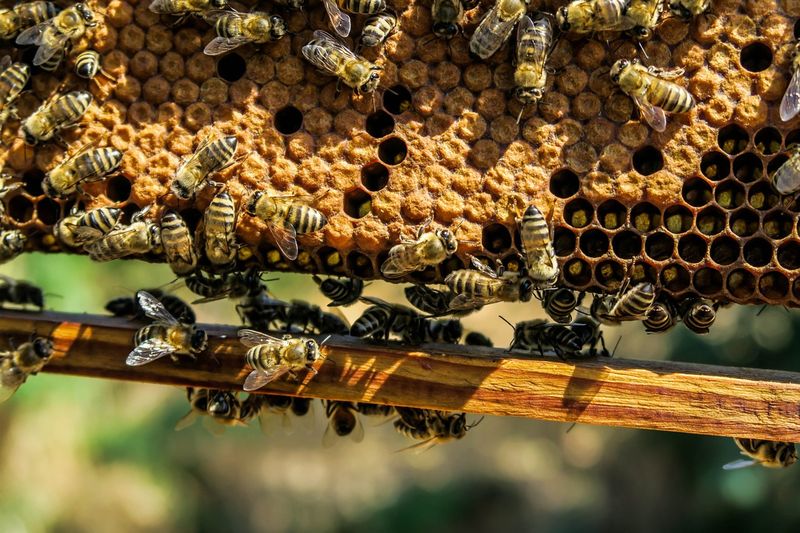
The bee hive is a model of social organization, featuring well-defined roles and responsibilities. Each bee, from queen to worker and drone, has a specific function that contributes to the colony’s success. This structure ensures efficient resource management and care for young bees. The hive’s social dynamics are a testament to evolutionary success, demonstrating cooperation and division of labor. Such organization allows bees to adapt to environmental changes and challenges. The hive’s hierarchy and teamwork reflect the essence of communal living, where collective effort ensures survival. This intricate social fabric is central to understanding bee societies.
The Dance of the Drones
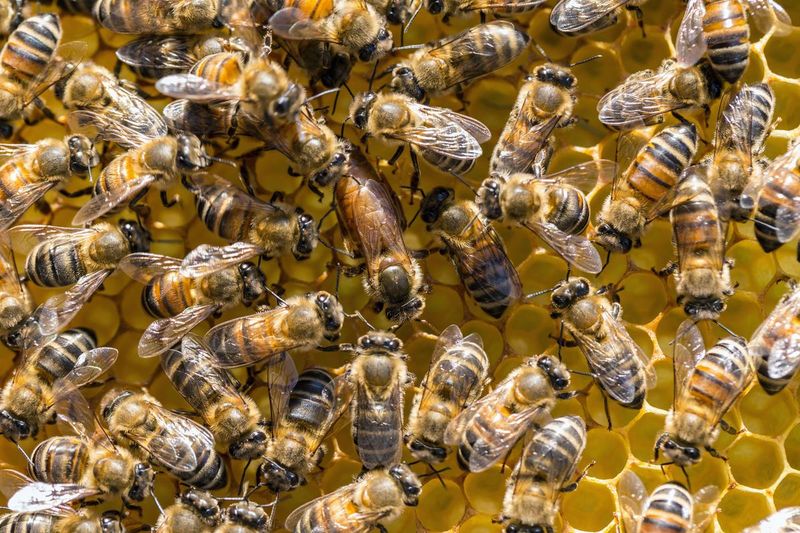
Drone bees partake in a dance of their own, albeit in the sky. These males leave the hive to congregate at drone congregation areas, waiting for virgin queens. This aerial courtship is crucial for genetic exchange within bee populations. Drones’ flight patterns and congregation behaviors ensure queens encounter diverse mates, fostering colony resilience. This mating ritual highlights the balance between competition and collaboration in bee societies. Although only a few drones succeed in mating, their collective endeavor strengthens the genetic pool. The drone’s dance in the sky is a vital aspect of bee reproduction, ensuring species propagation.
Beeswax Versatility
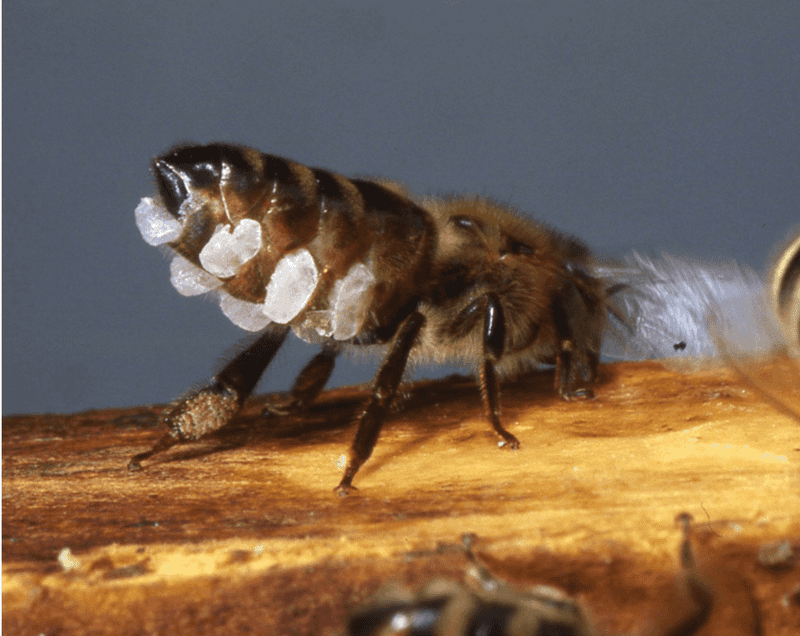
Beeswax, secreted by worker bees, is the building block of the honeycomb. This natural substance is versatile, used for construction, sealing, and storage. Bees meticulously mold wax into hexagonal cells, optimizing space and resources. Beyond structural use, beeswax has antimicrobial properties, protecting hive contents. Its production demonstrates the bees’ resourcefulness and adaptability. By recycling old wax and incorporating new, bees maintain hive integrity and hygiene. This renewable material reflects the bees’ ability to harness natural resources sustainably. Beeswax is a testament to the bees’ engineering skills, providing insight into their complex and efficient societal structure.
Colony Collapse Mystery
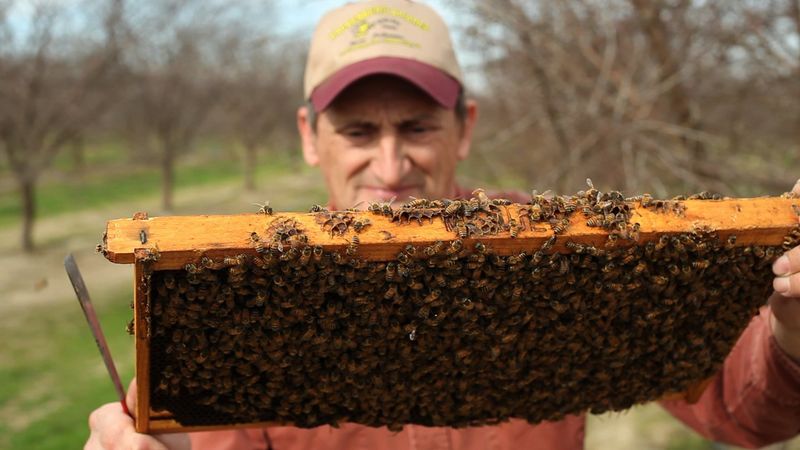
Colony Collapse Disorder (CCD) remains one of the greatest challenges facing bees today. This phenomenon involves the sudden disappearance of worker bees, leaving behind a queen and a few young. Despite extensive research, the exact causes of CCD are elusive, though factors like pesticides, disease, and habitat loss are implicated. The impacts on agriculture and ecosystems are profound, as bees play a crucial role in pollination. Understanding and addressing CCD is essential for bee conservation and food security. The mystery of this crisis underscores the need for ongoing research and sustainable practices to protect bee populations.
Honeybee Lifespan Variance

Honeybee lifespans vary significantly based on their role within the hive. Worker bees, the colony’s labor force, live for a few weeks to months, depending on the season. Drones, whose primary function is reproduction, live a few weeks until mating. In contrast, the queen can live several years, laying thousands of eggs. This lifespan variance reflects the colony’s adaptive strategies and resource allocation. By optimizing life expectancy based on function, bees ensure efficiency and continuity. Understanding these differences highlights the hive’s complex social dynamics and the evolutionary pressures shaping bee communities. Lifespan diversity is a cornerstone of bee society.
Varroa Mite Challenge
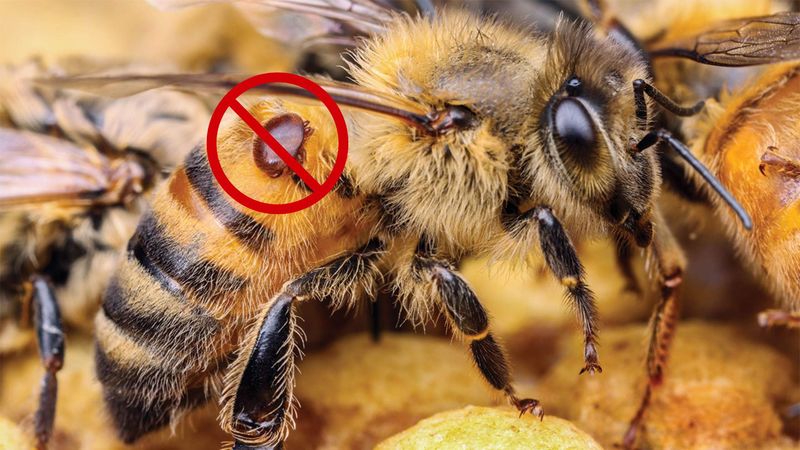
Varroa mites pose a significant threat to honeybee colonies worldwide. These parasites weaken bees by feeding on their bodily fluids and spreading viruses. Their presence can lead to colony decline and collapse if not managed. Beekeepers employ various strategies to combat mites, including chemical treatments and breeding for resistant bee strains. The fight against Varroa mites is critical for maintaining healthy bee populations. This challenge underscores the need for vigilant hive management and research into sustainable solutions. Addressing the Varroa threat is essential for the future of beekeeping and the ecological services bees provide.
The Significance of Swarm Cells
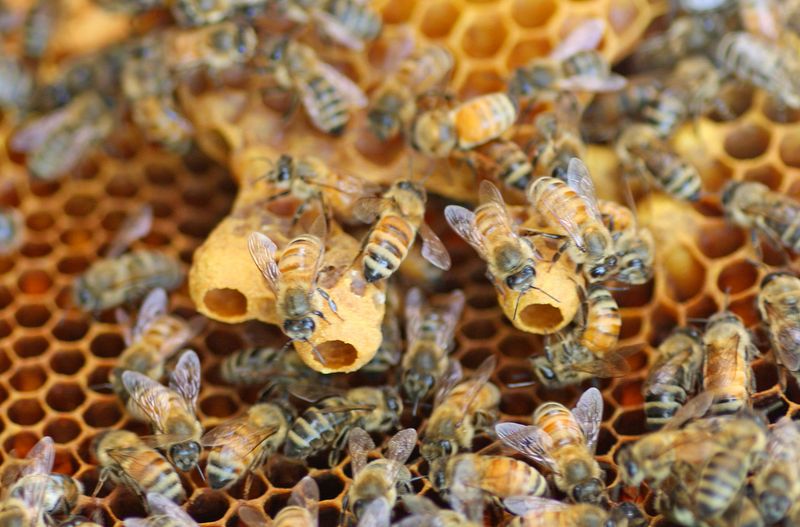
Swarm cells are key indicators of a hive’s readiness to swarm. These special cells house developing queens, signaling an impending colony division. Beekeepers monitor swarm cells to anticipate and manage swarming behavior. By understanding swarm cell development, beekeepers can take preventive actions, such as hive splitting, to control bee populations. Swarm cells reflect the hive’s internal assessments and readiness to expand. Their presence highlights the bees’ proactive measures for genetic diversity and resource management. Managing swarm cells effectively is vital for maintaining colony health and preventing unwanted swarming, ensuring the stable growth of bee populations.
The Night Shift: Nocturnal Honeybees

Honeybees are often thought to cease activity at dusk, retreating to their hives to rest. However, some honeybees take on the role of nocturnal foragers. These bees brave the night, seeking out moonlit flowers that offer sweet nectar rewards.
Unlike their daytime counterparts, these night shift workers rely on the subtle glow of the moon and stars to navigate. Their journey is guided by enhanced night vision that allows them to detect faint floral cues in low light. As unsung heroes of the hive, nocturnal honeybees ensure the colony’s success by maximizing foraging time and resource acquisition.

